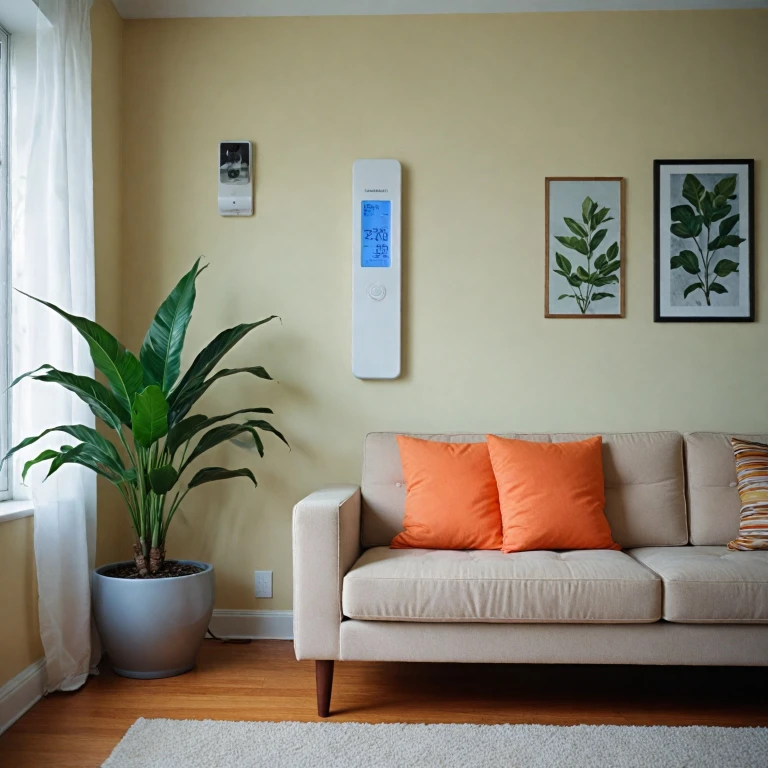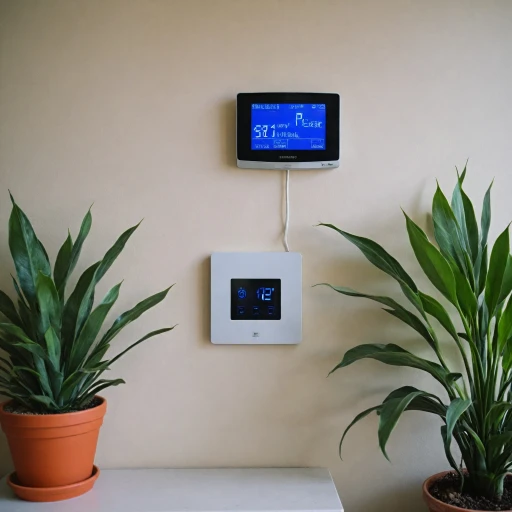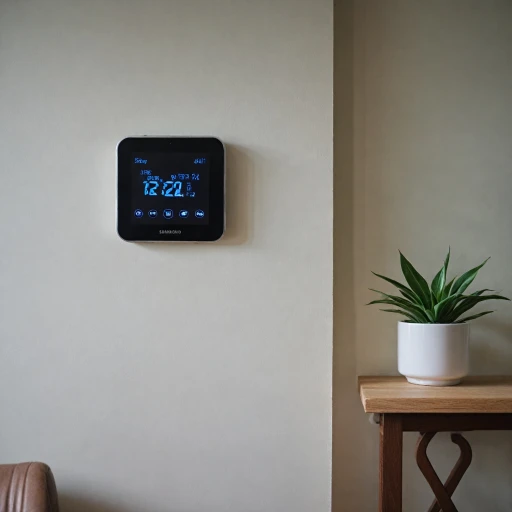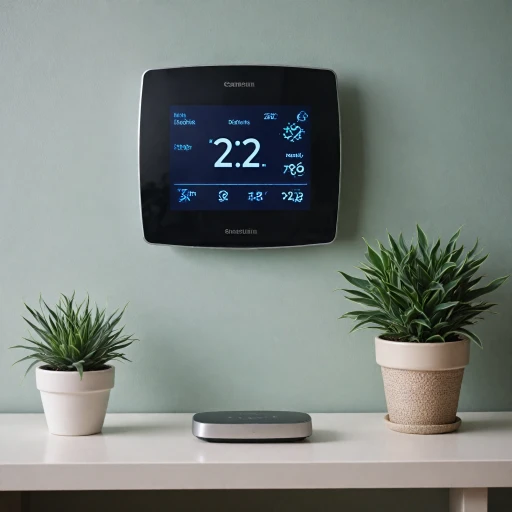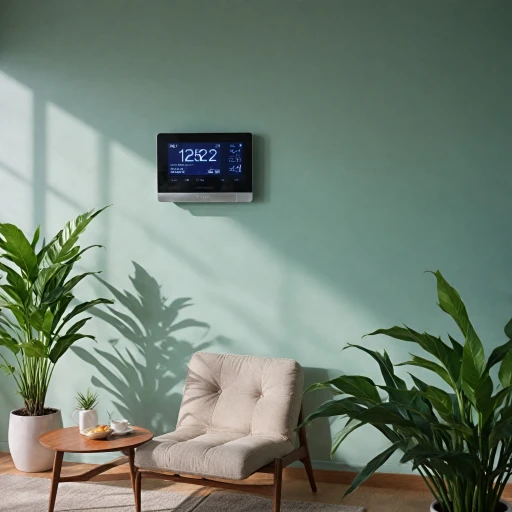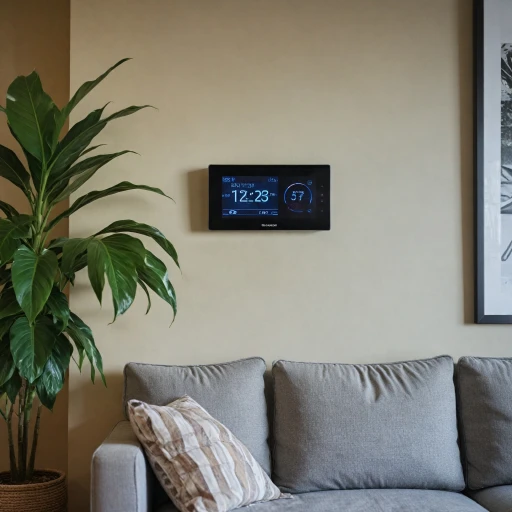
Understanding Wi-Fi Thermometers
Decoding Wi-Fi Enabled Temperature Sensors
Wi-Fi thermometers have transformed the way we monitor indoor and outdoor conditions, providing real-time data and insights at our fingertips. These devices come equipped with advanced temperature and humidity sensors enabling users to track environmental changes efficiently. As part of a broader smart home system, they help optimize comfort, energy efficiency, and even security.
Utilizing wireless technology, Wi-Fi thermometers transmit data over the internet, allowing for remote monitoring through a dedicated app. Whether you're at home or away, you can access readings, historical data, and alerts directly on your smartphone. The wireless range and the device’s signal strength ensure reliable connectivity, while features like battery life indicator and free shipping options enhance user experience.
Equipped with an LCD screen, these devices display real-time measurements, making it easy to monitor temperature and humidity changes indoors and outdoors. Many models also incorporate weather stations, allowing users to monitor local weather conditions. Remote sensors extend the thermometer's functionality by providing precise data from multiple locations within your home.
When setting up a Wi-Fi thermometer, it's essential to consider factors such as the interval of data updates, the capability to withstand outdoor temperatures, and the overall ease of integration into existing smart home systems. With an array of options in the market, selecting a product that aligns with specific needs—like enhancing your home with a wireless thermostat kit—becomes crucial to ensure utmost comfort and utility.
Benefits of Using Wi-Fi Thermometers
Smart Control with Temperature and Humidity Monitoring
Wi-Fi thermometers have grown in popularity due to their numerous benefits, significantly enhancing the comfort and convenience of managing indoor and outdoor temperatures. These devices incorporate technology to help homeowners gain precise control over their environment, providing insights through a temperature sensor, a humidity sensor, and more. Using a wireless thermometer allows you to monitor temperature and humidity data both indoor and outdoor, all from the convenience of a thermometer app on your smartphone or tablet.
One of the main advantages of these devices is their ability to provide real-time readings. Real-time data helps you make timely adjustments to your home’s heating and cooling systems, ensuring consistent comfort. The historical data functionality is also beneficial, as it allows you to analyze temperature trends over time, improving your decision-making when it comes to energy usage.
Beyond real-time monitoring, Wi-Fi thermometers integrate with various sensors to provide wider coverage and comprehensive data collection. For example, additional remote sensors can extend the range throughout your home, capturing readings in areas that might otherwise be difficult to measure. Additionally, wireless temperature technology supports increased mobility, allowing you to move sensors as needed without the hassle of rewiring.
Battery life is a critical consideration when using Wi-Fi thermometers. Long-lasting batteries in indoor and outdoor units ensure that devices remain operational throughout all seasons, irrespective of weather conditions. Shipping orders for these devices typically come with free shipping, making them an even more economical choice for savvy consumers.
Another draw is the easy installation process and user-friendly interfaces, frequently featuring an LCD screen that displays data clearly at a glance. This ease of use, complemented by intuitive apps, allows you to set thresholds for alerts or notifications, helping to maintain ideal temperature settings without constant manual input. As technology evolves, knowing how to best utilize a Wi-Fi thermometer will continue to be an essential component in smart home systems.
Challenges and Considerations
Potential Hurdles in Smart Thermostat Adoption
While the advantages of utilizing Wi-Fi thermometers are numerous, it is essential to evaluate potential challenges and considerations to ensure they meet your specific needs. Several factors can impact the effectiveness and ease of use of these devices. Here's a closer look at what to keep in mind:
- Signal Strength: The accuracy of temperature and humidity readings can be affected by the strength of your Wi-Fi signal. If your home has areas with poor Wi-Fi coverage, the wireless temperature sensor might deliver inconsistent data, which could influence your ability to monitor temperature effectively. Consider investing in a Wi-Fi booster if signal range poses a problem.
- Power and Battery Life: Many Wi-Fi-connected smart thermometers rely on batteries, which can deplete over time. Monitoring battery life is crucial to ensure continuous operation of temperature and humidity sensors, thus preventing interruptions in data collection.
- Integration with Existing Systems: If you have other smart home systems, ensuring compatibility with your existing devices is vital. The ability to seamlessly integrate a Wi-Fi thermometer with other smart systems can enhance overall functionality, providing indoor and outdoor temperature data in real time.
- Range of Sensors: It's important to verify the range of wireless indoor and outdoor sensors. Knowing the maximum distance they can effectively transmit data to the central monitor or thermometer app is key for optimal placement, whether you are tracking outdoor weather conditions or indoor climate.
- Interval Settings: Consider what fits your lifestyle and needs best—some models offer adjustable interval settings for temperature and humidity readings. This option impacts battery consumption and might influence your choice based on how often you desire real-time updates.
Incorporating these considerations will better prepare you to make an informed decision and maximize the benefits of your Wi-Fi temperature sensors. As you explore your options, keep in mind the insights gathered from other sections of this article regarding integration strategies with smart home setups and the role of reliable mini-split thermostats.
Integration with Smart Home Systems
Smart Home Synergy with Wi-Fi Thermometers
Integrating a Wi-Fi thermometer into your smart home setup is a seamless experience that can greatly enhance your overall home comfort. By leveraging the capabilities of these advanced devices, you can create an interconnected system that communicates effectively to maintain the ideal indoor environment. Wi-Fi thermometers are equipped with temperature and humidity sensors that monitor real-time conditions both indoors and outdoors. Thanks to their wireless capabilities, these thermometers can send data over a Wi-Fi network to a thermometer app on your smartphone. This allows you to access historical data, monitor temperature changes accurately, and adjust settings remotely. A crucial factor in achieving efficient integration is understanding the range of your Wi-Fi signal strength. Ensuring that the Wi-Fi thermometer is within the suitable range is essential for reliable data transmission. This consideration is especially important if you have remote sensors positioned around your property to gather outdoor temperature and humidity readings. Wireless thermometers also offer the advantage of compatibility with other smart devices within your home. Hooking up your Wi-Fi thermometer to a broader smart home ecosystem, including HVAC systems and weather stations, can lead to more precise control of the climate in your living space. Moreover, when interfaced with these systems, the temperature sensor app can adjust settings in response to varying weather conditions, optimizing energy usage and comfort. By incorporating smart scheduling through a user-friendly app, you can optimize intervals for HVAC operation, ensuring that your home's heating and cooling systems run efficiently. Keeping in mind the battery life of your Wi-Fi thermometer can prevent disruptions in service and maintain continuous data collection. Overall, integrating a Wi-Fi thermometer with your smart home not only provides temperature and humidity monitoring but also allows you to react promptly to environmental changes, enhancing comfort with technology that adapts to your lifestyle.Future Trends in Smart Thermostat Technology
Anticipating the Evolution of Thermostat Technology
The smart thermostat market is continuously evolving with emerging trends that promise to revolutionize home comfort. As these devices become more sophisticated, they not only monitor indoor and outdoor temperatures but also provide a comprehensive range of features. From temperature sensors to humidity sensors, these innovations bring a new level of precision to temperature regulation.
One of the most anticipated trends in smart thermostat technology is the improved integration with wireless home automation systems. The ability for thermostats to easily communicate with other devices enhances the overall functionality and convenience of a smart home. This has become particularly important as the demand for streamlined operations and enhanced connectivity continues to grow.
Another noteworthy trend is the expansion of app functionalities. Modern smart thermostats come equipped with apps that allow homeowners to monitor temperature and humidity in real-time, providing them with indoor and outdoor readings. The capability to access historical data enables users to make informed decisions about their energy consumption, optimizing both comfort and cost-efficiency.
Enhanced battery life and signal strength will also play crucial roles in the next generation of smart thermostats. As these devices become more reliant on wifi connections and remote sensors, ensuring consistent performance over a wide range is essential. This focus on reliability ensures that smart thermostats can maintain accurate temperature and humidity readings without frequent disruptions.
Finally, growth in the sophistication of sensors for monitoring intervals and predicting weather patterns will enable smart thermostats to proactively adjust settings for optimal indoor climate. As these technologies continue to advance, shipping orders for these prognostic features will likely see an uptick.
In summary, the future of smart thermostat technology looks promising, with innovations aimed at enhancing user experience through improved connectivity, app integrations, and sensor capabilities. As these trends develop, homeowners can expect more responsive and intuitive control over their indoor environments.
Choosing the Right Wi-Fi Thermometer for Your Home
Selecting the Perfect Wi-Fi Thermometer for Your Household
Choosing the ideal Wi-Fi thermometer for your home can greatly enhance your comfort levels and energy efficiency. Here are some key considerations to keep in mind:- Temperature and Humidity Monitoring: Ensure the device offers precise temperature sensor capabilities, as well as accurate humidity readings. A reliable humidity sensor can help maintain optimal indoor air quality.
- Real-Time Data Access: Opt for a thermometer that provides wireless temperature updates and allows for outdoor temperature monitoring. Real-time and historical data access through a thermometer app is often available in effective models.
- Wireless Range and Connectivity: Check the wireless range and signal strength of the thermometer. Reliable Wi-Fi connectivity is crucial for remote sensor updates, allowing you to monitor indoor and outdoor conditions at any time.
- Battery Life and Power Options: Consider models with long-lasting battery life or alternative power options. Wireless indoor thermometers should function reliably without frequent battery replacements.
- Integration with Smart Home Systems: If you have a smart home setup, ensure compatibility with existing systems. Transitioning seamlessly with devices like smart thermostats can optimize your home’s climate control.
- Additional Features: Look for models with features like an LCD screen for easy readability, adjustable data interval settings, and free shipping options. Advanced versions can include a weather station for comprehensive climate reports.
- Price and Value: Assess the cost against the features and reliability offered. Consider shipping orders and potential additional expenses.
